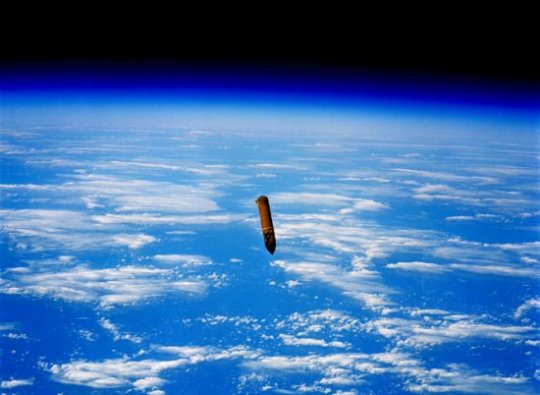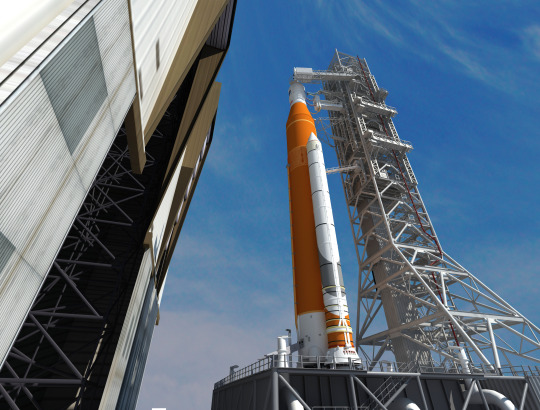#spaceglight
Explore tagged Tumblr posts
Photo

The Space Transportation System, while designed to be reusable, had one major component that was thrown away following the orbiter’s separation from the Solid Rocket Boosters and ascent into LEO - the big orange External Tank (ET). The ET was jettisoned 70 miles above Earth, after providing fuel for the three SSMEs, breaking up in the atmosphere over the Indian Ocean. The ET was the backbone of the shuttle stack, and had to handle the force of the two SRBs beside it, as well as the orbiter’s main engines, a total of 7.8 million pounds of thrust.
While most ETs look the same, several changes over the 30 years of the shuttle program saw improved, weight reduced tanks flown, allowing the orbiter to enter higher orbits with heavier payloads.

During the shuttle program, the ET was assembled by Martin Marietta (Lockheed Martin) at the Michoud Facility in New Orleans, and were delivered by barge to Kennedy Space Center. The ET consisted of a liquid oxygen tank in the forward (nose) area, and a larger liquid hydrogen tank in the aft. The intertank area consists of electrical systems and is unpressurized.
A few variations of ET were used, each new variation saving weight over the previous. STS-1 thru STS-7 flew the Standard Wight (External) Tank, or SWT, which weighed about 77,000 pounds unloaded.

Interestingly, STS-1 and STS-2 saw the only flights of the ET painted white. The white paint was applied to protect the tanks from extended exposure from UV light, however this proved unnecessary. All subsequent ETs from STS-3 onward were the iconic orange color. Removing the white paint saved the SWT an extra 600 pounds.
Following STS-7, the Light Weight Tank (LWT) would improve weight reduction further with the removal of the anti-geyser line, which brought the weight down to 66,000 pounds. The LWT would be the most flown tank variation over the life of the shuttle program.

The LWT was also the variant flown on STS-107, where a piece of foam insulation separated from the tank at the bipod ramp , which connects the tank to the orbiter, striking a fatal blow to Columbia’s port-side wing.

The last tank variant to be flown would be the Super Light Weight Tank (SLWT), flown on all missions following STS-91 which exceptions to STS-99 and STS-107. A large portion of the SLWT was constructed with an aluminum-lithium alloy, bringing the SLWT weight to a featherweight 58,000 pounds. This reduction allowed for a significantly heavier payload to be delivered to the high-inclination orbit of the ISS.
The orange color begins as a lighter orange-yellow when the insulation foam is applied. As the completed shuttle stack rolls out from the VAB and the ET is exposed to UV light, the insulation becomes darker. No two tanks are ever exactly the same shade of orange.

One can see the legacy of the orange ET in the core-stage for the in-development SLS rocket, due to launch in late 2018. These core stages are also being build at the Michoud Assembly Facility, and will store liquid hydrogen and liquid nitrogen, like the STS External Tanks that came before.

A LWT will be displayed with Space Shuttle Endeavour at the California Science Center as a full, upright shuttle stack after the exhibit is completed in 2019.
#nasa#history#spaceglight#external tank#space shuttle#Space Transportation System#Space Launch System#aerospace
200 notes
·
View notes